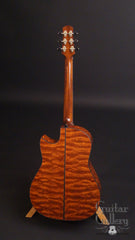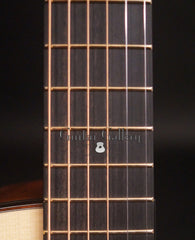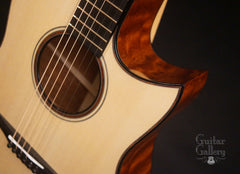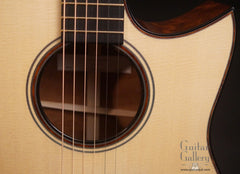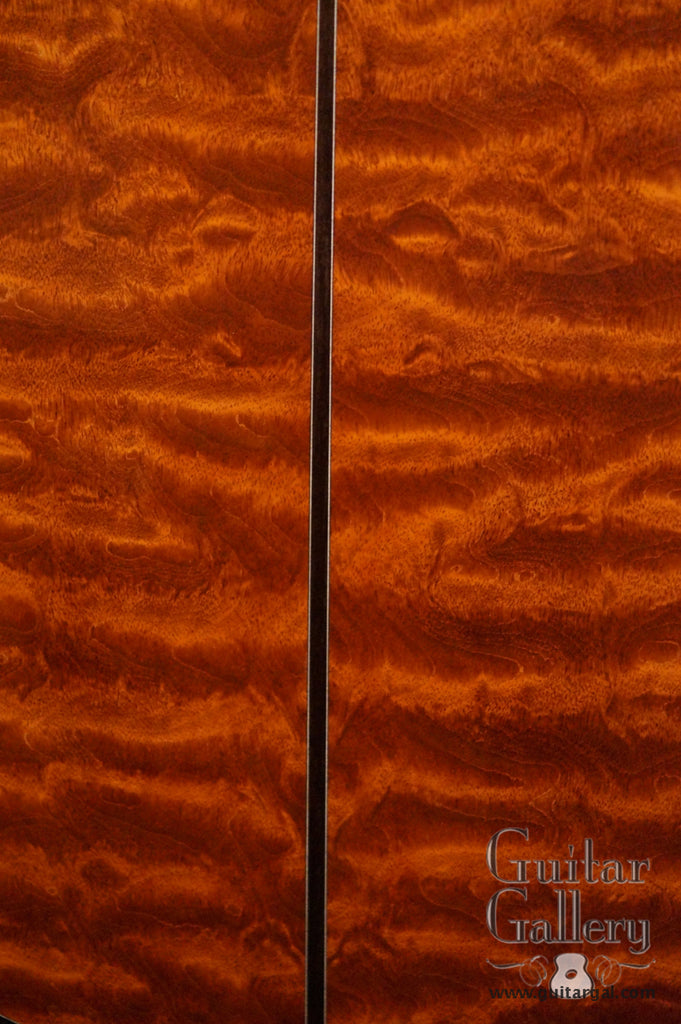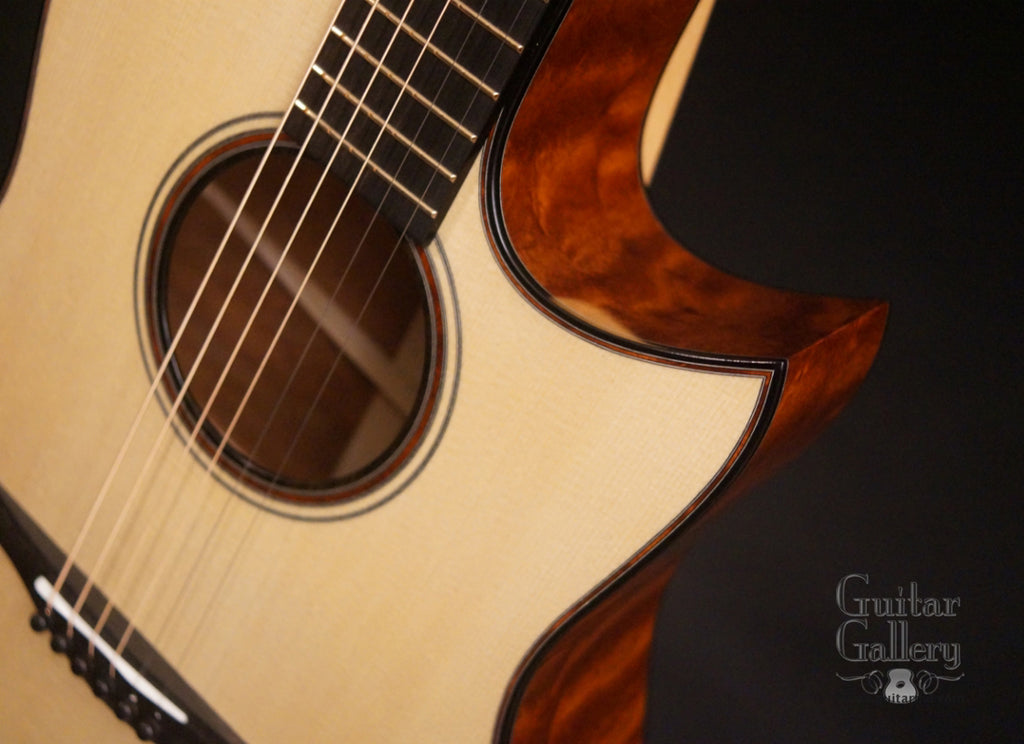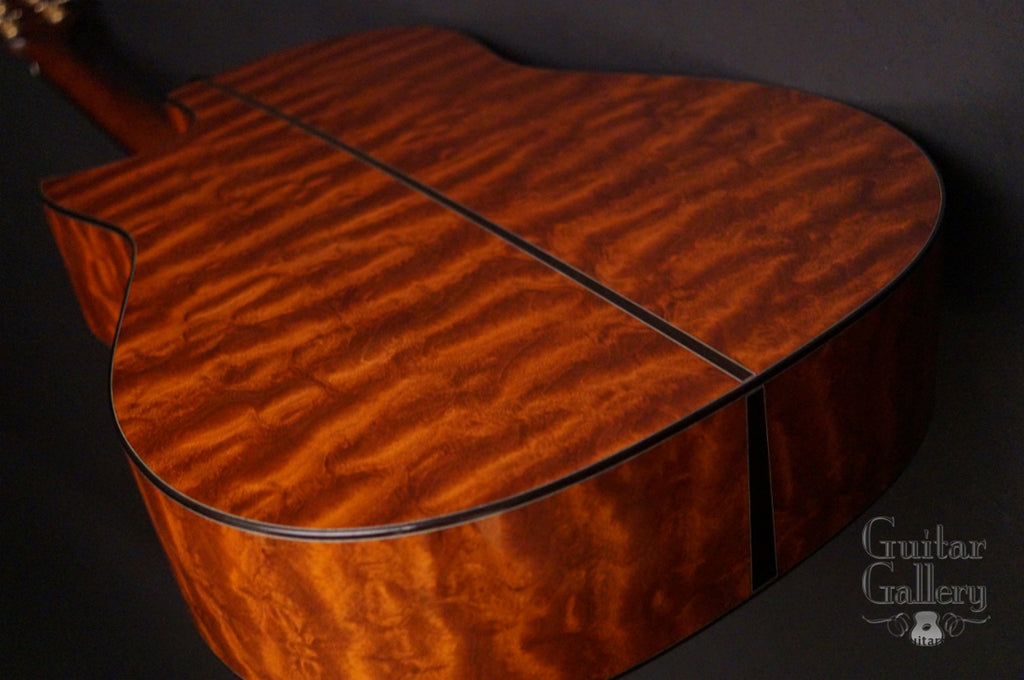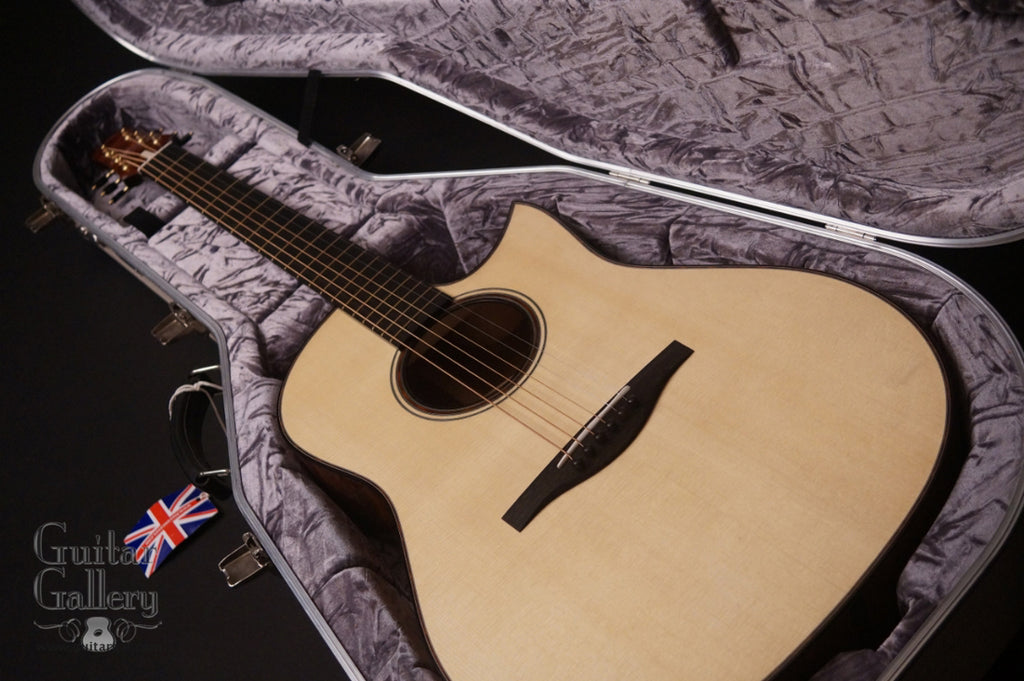Rasmussen Model S TREE Mahogany Guitar
Please Call to Inquire

Lars Rasmussen S Cutaway TREE Mahogany Guitar (New)-Sold
In 1965 in Honduras’ Chicibul Jungle a group of loggers discovered something incredible: a magnificent tree over 100ft long and 10 ft in diameter at the base. The entire tree was decorated in a spiraling bark that hinted at the serious potential of highly figured wood. With great pride and perseverance these loggers felled the tree on that day knowing that the closest mill was over 200 miles away. As daunting as it may seem to move such a large tree through the dense jungle, the loggers knew it was possible and took great pride in the challenge. Unfortunately the fell didn’t go as they planned and the gigantic tree felled into a ravine. After it felled and was cut in half a D7 Caterpillar Tractor was brought in to move the tree, but failed miserably. The Tree rested there for 18 years.
In 1971, a local sawmill manager heard the rumor of a highly figured gigantic Mahogany tree stuck in a ravine. A mill approached Robert with an offer to recover the tree from the jungle. Robert convinced a crew of workers to go into the jungle and bring home the tree. The crew quartered the two halves with chainsaws and dragged and trucked all eight pieces through 100 miles of jungle to the river. The quartered logs were sawn again and pushed into the river and floated 70 miles to the nearest mill, an old British steam powered operation.
Once the tree was opened the crew knew why they had worked so hard recover the wood. The log was revealed to be the rarest of all figured Mahoganies, technically known as “blistered” or “quilted.” The cause of the grain is not known but is considered a genetic defect. Novack carefully supervised his crew and over the course of 12 days the tree was milled with the best cut possible being the objective every time. Lumber in this capacity is measured in a “board foot” which is 144 cubic inches, 12 x 12 x 1. Novack milled 12,000 bd foots out the tree and only one third of that was quilted. The other two thirds were wavy or ribbony and a blend of quilting with ribbons.
After been air dried to 35% the wood was shipped to Miami and the drying was completed in an evaporator kiln. It is typical of Mahogany to take up to 11 days to dry. The tree took 30 days to kiln dry because of its density. 1/2 of the wood remained in Miami while the other 1/2 was shipped to hand loggers in Sausalito California. Due to its historical journey and extreme rarity the tree is the most highly sought after wood for guitars today and is very, very limited in supply.




